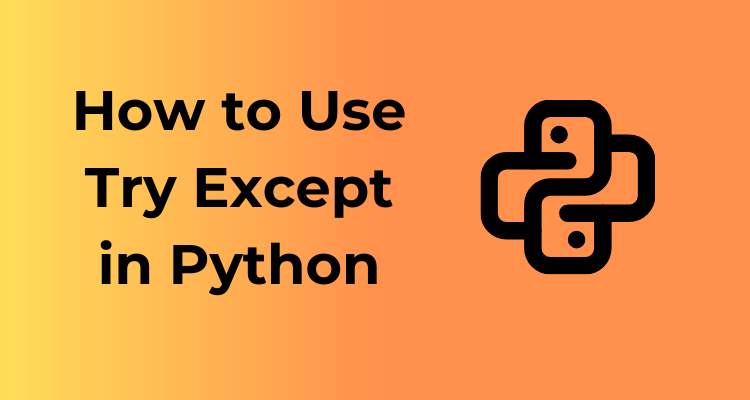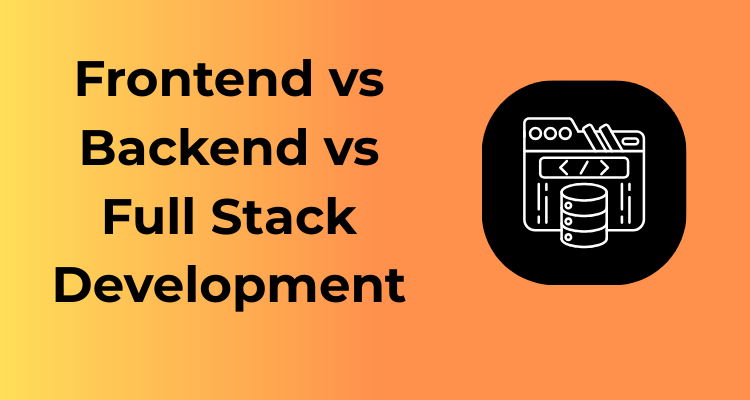When you’re learning Python, encountering errors is as inevitable as forgetting where you put your coffee cup in the morning. But fear not! Python’s try and except blocks come to the rescue, helping you handle these pesky errors. Whether you’re a beginner or a seasoned programmer, understanding this concept is essential to writing robust and user-friendly code.
What exactly does try except do?
In essence, it’s like having a safety net for your program. When you surround a potentially error-prone piece of code with a try block, Python attempts to execute it. If an error (also known as an exception) occurs, instead of the program crashing, the control is passed to the except block to handle the issue gracefully.
Think of it as your program saying: “Hey, I’m going to try this, but if something goes sideways, here’s a backup plan.”
Here’s why this is awesome:
- It prevents your entire program from breaking down due to one error.
- It allows you to manage errors in a way that makes sense for the user experience or further debugging.
- It keeps your code clean while maintaining functionality under unexpected conditions.
Here’s what’s happening under the hood:
tryblock: Python runs the code inside this block.- If something goes wrong in the
tryblock, Python looks for the matchingexceptblock. - When it finds the matching
exceptblock, Python executes the code inside that block. If no error occurs, theexceptblock is skipped entirely.
For instance, let’s look at a simple example:
try:
number = int(input("Enter a number: "))
print("You entered:", number)
except ValueError:
print("Oops! That's not a valid number.")How does this work?
If the user enters a valid number, the program runs smoothly. However, if the user mistakenly types in “apple,” the program catches this as a ValueError and gracefully tells the user their input isn’t right—without crashing.
A Few Fun Facts About try except in Python:
- You can have multiple
exceptblocks to handle different types of errors. For example, handleFileNotFoundErrorseparately fromZeroDivisionError. - You can use a general
exceptblock to catch errors you didn’t anticipate (though this comes with caveats, as we’ll discuss later in the series). - Optional
elseandfinallyblocks maketry–excepteven more versatile. Theelseblock runs if no error occurs, and thefinallyblock runs no matter what—perfect for cleanup tasks.
The Why Behind Using Try Except: Benefits Beyond Error Handling
Let’s face it: nobody enjoys when an error pops up and breaks the flow of a program. It’s like having a flat tire on a road trip – unexpected and frustrating. But here’s the great news: Python’s try and except blocks don’t just patch up your program like a makeshift spare tire. They can take your code to the next level! Wondering how? Let’s dive in.
1. Bulletproofing Your Code

At its core, the try and except duo is all about stopping your code from crashing. What good is a program if it breaks the moment something unheard of crops up? By anticipating potential issues, you create a safety net, ensuring that your code behaves gracefully – even when the unexpected shows up uninvited.
For example, imagine you’re writing a program that reads user input to perform math operations. A simple mistake, like dividing by zero, could halt the entire operation. But by using try and except, you can catch the error and provide users with a helpful message instead of a scary traceback error!
try:
number = int(input("Enter a number: "))
result = 100 / number
except ZeroDivisionError:
print("Oops! Division by zero is not allowed.")
2. Enhancing User Experience:
Users often don’t care (and shouldn’t need to care) about the technical details of your program. They just want it to work! By using try and except blocks, you can ensure they receive friendly error messages that guide them instead of leaving them baffled over cryptic errors. This makes your code feel more professional and approachable.
Consider a scenario where users upload a file to your application. If there’s an issue – such as the file being in the wrong format – instead of crashing, your program could gracefully inform them: “Unsupported file type. Please upload a .csv file.” Pretty neat, right?
3. Smoothing Over Real-World Imperfections
In the glamorous world of coding, the real world is rarely as predictable as we’d like. Files go missing, network connections falter, and user inputs are sometimes… creative (yes, we all know that user). Instead of demanding perfection, try and except allow your program to handle imperfections with finesse.
- File handling: If you’re processing files, users might accidentally delete or move them. Wrapping your file interactions in a
tryblock ensures this doesn’t derail your program. - Web requests: Network hiccups happen all the time. A
tryblock can ensure your web app tries again or notifies users politely without a dramatic crash. - User-generated chaos: Let’s be honest; users will input a string when you ask for a number. Using
exceptblocks ensures your program reacts constructively.
4. Improved Debugging and Feedback Loops
Sometimes, errors aren’t catastrophic, but they’re still worth logging. By selectively catching exceptions, you can log details for debugging later without stopping the program. This proactive approach allows for smoother operations and a trail that helps you understand what went wrong.
5. Ensuring Continuity of Operations
Perhaps the biggest advantage of try and except is maintaining continuity. Instead of the entire program halting at the first sign of trouble, you can isolate errors to specific areas. This containment strategy means that the other parts of your application can keep running smoothly, providing value to the user despite a hiccup elsewhere.
Imagine an online store. If one service fails, like loading images, you wouldn’t want the whole website to crash and burn. By using try and except, that feature might fail, but other functionalities like processing payments or product descriptions will stay unaffected. Now THAT’S professional-grade coding!
Building Blocks: Writing Clear and Effective Try Except Blocks
Alright, let’s roll up our sleeves and dig into the nuts and bolts of crafting try and except blocks in Python. These aren’t just tools—they’re your trusty sidekicks when things in your code don’t go as planned. Writing a clean and effective try-except block can save you from a world of debugging headaches, so let’s get this right from the start!
What Does a Good Try Except Block Look Like?
First things first, a well-written try-except block is like a great conversation: it’s clear, straight to the point, and avoids unnecessary “fluff.” Here’s an example:
try:
result = 10 / int(user_input)
except ValueError:
print("Please enter a valid number.")
except ZeroDivisionError:
print("Oops! You can't divide by zero.")
else:
print(f"The result is {result}")
finally:
print("Thanks for using our calculator!")
Looks simple, right? Let me walk you through it:
try: Where the action happens. This is the block where you put the code you suspect could run into trouble. You’re not expecting issues, but you’re ready just in case!except: The safety net. This is where you handle issues gracefully. Notice that we specify different error types (ValueErrorandZeroDivisionError)—this is crucial for clarity (more on this later).else: What happens if all goes well. This is optional, but it’s a great way to separate “happy path” code from error-handling code, keeping everything clean.finally: The clean-up crew. Think of it as your code’s closing ceremony. It runs no matter what—whether an error occurs or not.
Why Split Your Try and Except Logic?
A common mistake beginners make is shoving too much logic inside a single try block. You want to keep it tight and focused. For instance:
tryonly the part of your code that you think might fail.
Why? If you cram too much in there, it becomes harder to debug and pinpoint the exact issue. Let’s compare:
Too Broad:
try:
user_data = int(input("Enter age: "))
print("You can rent a car!")
except Exception:
print("Something went wrong!")
Clearer and Focused:
try:
user_data = int(input("Enter age: "))
except ValueError:
print("Age must be a number!")
else:
print("You can rent a car!")
Much better, right? By targeting a specific error, you’re not only helping yourself but also giving users clearer feedback.
Tips for Writing Clean Try Except Blocks
- Be specific about what you’re catching: Avoid generic
except:orexcept Exception:. It’s like using duct tape where a precise fix is needed. - Don’t ignore errors entirely: Even if you don’t want to stop the code, make sure to log the error for later. For example:
import logging try: risky_function() except SpecificError as e: logging.error(f"An error occurred: {e}") - Use comments wisely: Add short notes to explain your reasoning behind specific
exceptblocks. - Keep the block short and sweet: A cluttered
tryblock can quickly become overwhelming. Move unrelated code outside of it.
Catching the Right Errors: Avoiding Blanket Exception Handling
Imagine trying to fix something without knowing what’s broken—you’d likely end up more confused than before. That’s what happens when you use blanket exception handling in Python. While it might seem like the easy way out, catching every error using a generic except clause is like using a one-size-fits-all solution to solve a very specific problem. Spoiler alert: it’s not the best idea. Let’s dig into why targeting specific exceptions is the way to go and how it makes you a better, more thoughtful coder.
Why Blanket Exception Handling Can Be a Problem
- It hides useful information: When you catch every exception with a generic
except:, you’re essentially saying, “Something went wrong, but I have no idea what.” This makes debugging later an absolute nightmare. - Unintended consequences: You might unintentionally handle errors that you didn’t mean to. For example, suppressing a
KeyboardInterruptexception could cause your program to keep running even when someone tries to stop it. - Code smells: Blanket exception handling is often seen as lazy programming. It’s like trying to fix a leaky faucet with duct tape—it works for a second but leads to bigger problems down the road.
How to Catch Specific Exceptions Like a Pro
Instead of catching all errors, aim to catch only those that you anticipate. Python provides a variety of built-in exceptions like ValueError, ZeroDivisionError, and FileNotFoundError. Be deliberate in matching the exception type to the error-prone action in your code.
Here’s an example:
try:
number = int(input("Enter a number: "))
print(10 / number)
except ValueError:
print("Oops! That's not a valid number.")
except ZeroDivisionError:
print("You cannot divide by zero!")
In this snippet, only specific issues, like invalid inputs or division by zero, are being caught. This makes it clear what went wrong and avoids suppressing potentially critical issues.
Handle Multiple Errors the Smart Way
If you expect multiple types of exceptions, you don’t need to bloat your code with multiple except blocks. Python allows you to group exceptions together using parentheses, so your code stays both compact and readable. Check this out:
try:
file = open("nonexistentfile.txt")
except (FileNotFoundError, PermissionError) as e:
print(f"File error: {e}")
With this approach, you handle different but related errors together, while still providing meaningful feedback to the user (or yourself during debugging).
The Two Rules of Thoughtful Exception Handling
- Know your code: Understand what could go wrong. Anticipate common failure points based on the actions your code performs.
- Be intentional: Use specific exceptions to address likely errors and create clear messages or responses to those errors.
Remember, the goal isn’t just to make errors disappear—it’s to handle them in a way that makes your code robust, predictable, and easy to maintain.
Nested Try Excepts: When and How to Layer Them Correctly
Alright, so you’ve got the basics of try and except down, and you’re feeling pretty good about handling exceptions like a pro. But what happens when your code throws you a curveball and you’re dealing with multiple layers of potential error scenarios? Enter the world of nested try excepts. Let’s talk about how layering them can help unlock a whole new level of robust error handling.
When Should You Use Nested Try Excepts?
Nested try except blocks aren’t something you’ll use every day, but they’re lifesavers in the right situations. Here are some use cases where they shine:
- Complex Operations: When a function involves several independent steps and each step could trigger its own category of exceptions. For example, performing file operations, database queries, or network requests all in one go.
- Graceful Degradation: You want your program to work partially even if one part fails. A nested block allows targeted error handling without shutting down the entire process.
- Specific Error Contexts: If exceptions need distinct handling strategies depending on which part of the code they occur.
The Anatomy of Nested Try Except
So, how does it all work? Let’s look at a practical example:
try:
# Outer try block
file = open('example.txt', 'r')
try:
# Inner try block
data = file.read()
result = int(data) # What if data isn't an int?
print("Result:", result)
except ValueError:
print("Oops! File content isn't a number!")
finally:
print("Inner try cleanup done.")
except FileNotFoundError:
print("File not found. Check the file path!")
finally:
print("Outer try cleanup done.")
Pretty neat, right? This example handles file opening errors in the outer block and content-specific errors in the inner block. Each type of issue gets handled where it makes the most sense.
Pro Tips for Layering Correctly
Of course, with great power comes great responsibility. Nested try except blocks can get messy if you’re not careful. Here are some best practices to keep you on track:
- Keep It Readable: Avoid nesting too many layers. If you go five levels deep, it might be time to break the logic into separate functions.
- Don’t Overuse Finally: Use the
finallyblock only when necessary, like releasing resources, and keep it short and sweet. - Plan for Specificity: Each layer should have its own clear purpose. Handle file errors in one layer, and data validation in another, for example.
- Document What Matters: Comment your code to explain why you’re nesting and what each
exceptblock is targeting!
When Not to Use Nested Try Excepts
Sometimes, simpler is better. If your error-handling logic fits in a single try except block or can be refactored into helper functions, do that. Don’t overcomplicate things – code that’s easy to understand is always better.
Embrace the Power of Nested Try Excepts!
Done right, nested try excepts can add elegance and precision to your Python programs. They allow you to compartmentalize errors and handle them appropriately for different contexts, all while keeping your main program flow intact. So, next time you’re facing a tricky multi-step operation, don’t hesitate to layer those try excepts (responsibly, of course)! You’re adding armor to your code, one well-placed block at a time.
Debugging with Try Except: Common Pitfalls and How to Avoid Them
Ah, debugging—our favorite pastime as coders, right? Okay, maybe not, but debugging is a crucial skill in every programmer’s toolkit. When it comes to debugging in Python, the trusty try–except block can be both your savior and, if not used carefully, your undoing. Let’s dive into common pitfalls associated with debugging using try–except, along with strategies to steer clear of them!
Pitfall 1: Catching Every Exception Blindly
A huge no-no! When you write a blanket except: block, you’re effectively saying, “I’ll handle everything, even the things I shouldn’t, like keyboard interrupts or system-level failures.” This can lead to confusing bugs down the line because it suppresses critical errors without you realizing it.
How to Avoid:
- Always specify the exception type you want to catch. For example:
try: risky_operation() except ValueError as e: print(f"Oops! ValueError occurred: {e}") - Use
except Exceptionas a last resort, but try to log or re-raise the errors to ensure you don’t sweep issues under the rug.
Pitfall 2: Silent Failing = Silent Problems

One of the inherent risks with try–except blocks is that they can silence errors entirely. Imagine debugging a program, and there’s no error message or stack trace because the error was caught and simply ignored. Frustrating, right?
How to Avoid:
- Use logging instead of ignoring exceptions. For example, leverage Python’s handy
loggingmodule:import logging try: risky_code() except Exception as e: logging.error(f"Error occurred: {e}") - For debugging purposes, you might want to print more detailed error information:
import traceback try: risky_code() except Exception: traceback.print_exc()
Pitfall 3: Overusing try–except Blocks
Sometimes, we get a little too comfortable with try–except, sprinkling it everywhere instead of addressing the root problem. This can clutter your code and make it harder to read or maintain.
How to Avoid:
- Focus on validating inputs wherever possible before performing risky operations. For instance:
if not isinstance(user_input, int): raise ValueError("Input must be an integer!") - Use
try–exceptonly when truly necessary—when working with code that has a genuine risk of exceptions (e.g., file handling, division, networking).
Pitfall 4: Forgetting to Clean Up
Suppose your try–except block opens a resource (like a file or a database connection). What happens if something goes wrong? Yikes—you might forget to close it! Leaving resources dangling is a serious concern.
How to Avoid:
- Favor the
finallyblock for cleanup tasks:try: file = open("example.txt", "r") content = file.read() except FileNotFoundError as e: print(f"File not found: {e}") finally: if file: file.close() - Or better yet, use Python’s context managers:
with open("example.txt", "r") as file: content = file.read()With this, Python automatically handles cleanup for you—a win-win!
Best Practices: Writing Clean and Maintainable Python Error Handlers
Ah, the art of crafting impeccable error handlers in Python! Let’s face it, writing clean and maintainable code is a badge of honor for any programmer. When it comes to handling errors, you can elevate your skills and ensure your code shines like a polished gem by mastering a few best practices. Let’s dive right into them, shall we?
1. Be Specific with the Exceptions You Catch
One of the golden rules of writing Python error handlers is specificity. Sure, it’s tempting to use a generic except: block to catch everything. But believe me, **explicit is better than implicit** (yes, I’m quoting Python’s Zen here).
Instead of going for every possible error, define exactly which exceptions your code should handle. For instance:
try:
result = 10 / user_input
except ZeroDivisionError:
print("Whoops! Division by zero is not allowed.")
except ValueError:
print("Invalid input. Please enter a number.")
This makes your code more predictable and easier to debug. Plus, it avoids accidentally swallowing errors you didn’t anticipate.
2. Keep Your Try Blocks Lean
Here’s a great tip: **only wrap the code that might throw an exception in a try block**. Why? Because the smaller your try block, the easier it becomes to pinpoint which part of the code caused the problem.
Avoid this:
try:
# Lots of code here...
# Followed by some sketchy line that might cause an error.
except Exception as e:
print(f"Error occurred: {e}")
Instead, isolate the risky code:
try:
result = risky_operation()
except SpecificError as e:
print(f"Error: {e}")
This will save you, your teammates, and even your future self from unnecessary troubleshooting headaches.
3. Use Logging—Print() is Not Enough
Printing an error message to the console is perfectly fine when debugging, but professional code demands something more robust: **logging**. Python’s built-in logging module is your best friend here!
Why use it? It’s configurable, supports error levels (info, warning, error), and allows you to write error info to files or other outputs. Here’s an example:
import logging
logging.basicConfig(level=logging.ERROR, filename='app_errors.log')
try:
result = some_operation()
except Exception as e:
logging.error("An unexpected error occurred", exc_info=True)
With logging, you get the added bonus of creating a historical record of issues, which can be a lifesaver for debugging later on.
4. Avoid Hiding Errors Without Action
Silencing exceptions is one of the most dangerous things you can do. Catching an exception and doing absolutely nothing with it—no logging, no retries, no user notifications—creates a ticking time bomb.
Instead, even if you can’t resolve the exception immediately, make sure to:
- Log it (with sufficient details).
- Raise it or re-raise it if necessary.
- Notify the user or system accordingly.
Don’t turn a blind eye to errors—they rarely resolve themselves magically!
5. Don’t Overuse Try Except
Finally, resist the urge to slap try-except blocks everywhere. Remember: exception handling isn’t a substitute for proper validation or clean coding practices. Validate inputs, check conditions, or use if statements where appropriate before jumping to exception handling.
For example:
# Instead of:
try:
result = int(user_input)
except ValueError:
print("Invalid input!")
# Do this:
if user_input.isdigit():
result = int(user_input)
else:
print("Invalid input!")














